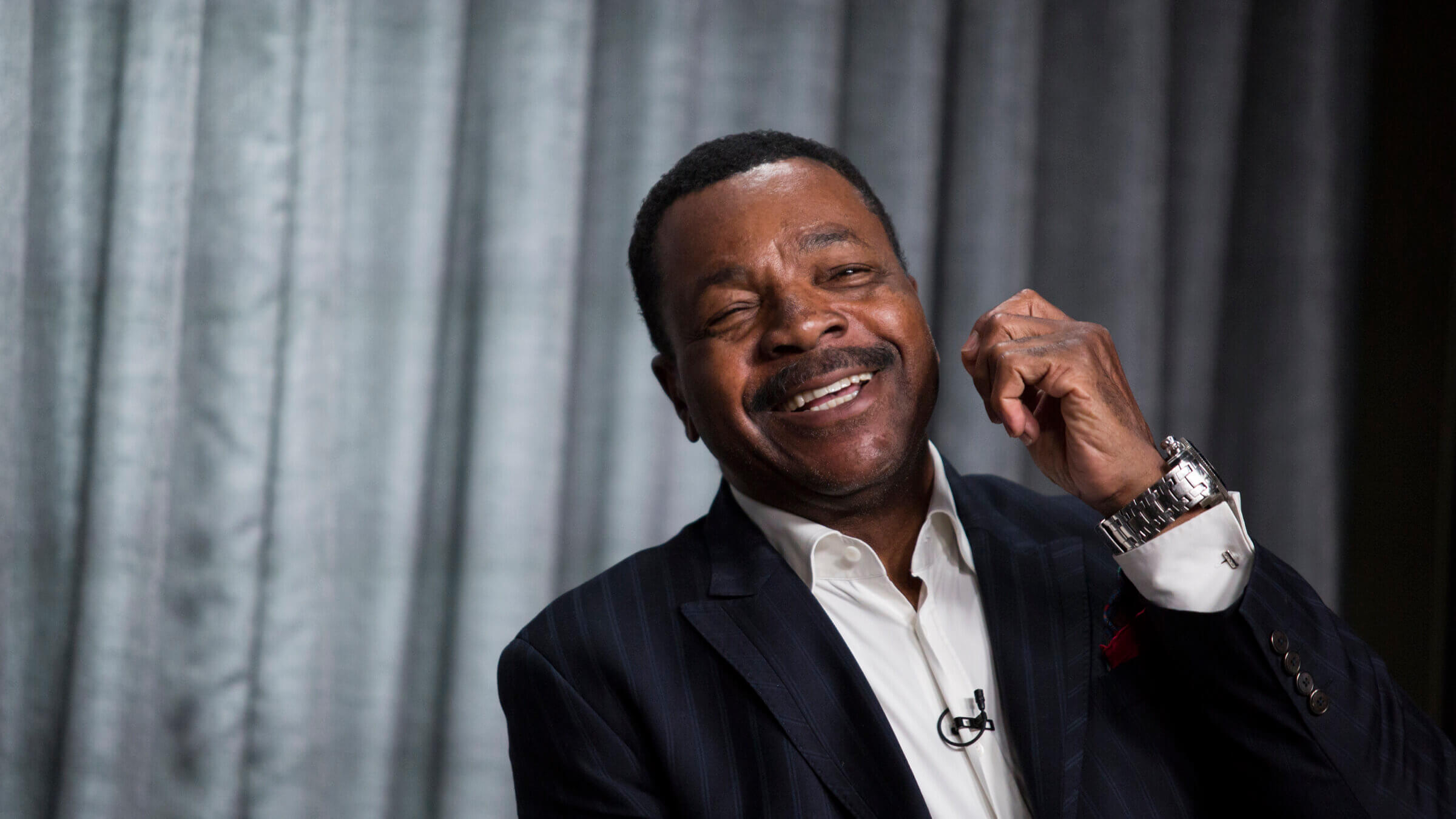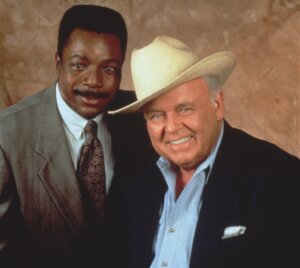When Carl Weathers dedicated a Torah scroll with Jerry Stiller
In a 1994 episode of ‘In the Heat of the Night,’ Weathers participated in a meaningful Jewish ritual

Carl Weathers in 2017. Photo by Vincent Sandoval/Getty Images
Carl Weathers, the football player turned actor and director, who died last week at the age of 76, left behind a legacy of iconic and colorful characters like Apollo Creed and Happy Gilmore’s Chubbs Peterson. But it was in one of his quieter roles, in the last two seasons of the TV adaptation of In the Heat of the Night, that he gave us one of television’s most Jewish moments.
In the 1994 episode “The Rabbi” a synagogue is set to open in Sparta, Mississippi, 26 years after the last Jewish congregation left. The town doesn’t exactly welcome the development. Two young men break the windows of the building — formerly a Methodist church — and the rabbi, Hillel Feldman (Jerry Stiller), seeks help from police chief Hampton Forbes (Weathers).
Feldman, who moved from New York with his daughter Rivka (Mindy Rickles — Don’s daughter), is originally from Sparta and left in the 1960s. At first it isn’t clear why, but it seems that the town’s sheriff, Frank Gillespie (Caroll O’Connor), may have had something to do with it. Rabbi Feldman requests that Gillespie, who he says is an antisemite, not be assigned to his case.
Things soon escalate. The synagogue’s janitor learns the Torah scroll is worth $25,000. He ransacks the temple and tries to pawn the scroll at a local store. Gillespie reveals that Feldman left Sparta after vandals, reacting to the rabbi’s outspoken support of the Civil Rights Movement, burned his old temple to the ground. He’s ashamed that, as a young man in a racist police department, he sat by as his chief buried the evidence.

Forbes is committed to helping Rabbi Feldman, and is present during scenes that explain the significance of the Torah scroll. It’s a stoic, restrained performance from Weathers, who could be flamboyant in his performances in the Rocky films, as himself in Arrested Development and as bounty hunter Greef Karga on The Mandalorian.
“I know there was a time that you stood up for your neighbors when nobody else would,” Forbes tells Feldman and pledges to let the town know.
But it’s the end of the episode that signals a commitment from one persecuted group to another. Forbes, who isn’t Jewish, is seen in the pews with a white kippah as the temple dedicates its recovered Torah scroll. Then, he rises and goes to the bimah where Rabbi Feldman invites him to lead the procession.
“By the principle of Darchei Shalom, we do this to reaffirm the solidarity of our peoples,” Feldman says.
Weathers, whose athleticism was so key to his performances, didn’t stumble with the weight of this responsibility, or the heft of the scroll. And though it was just one moment in a long career — and in a somewhat schlocky TV show — he made it not just memorable, but meaningful.






















